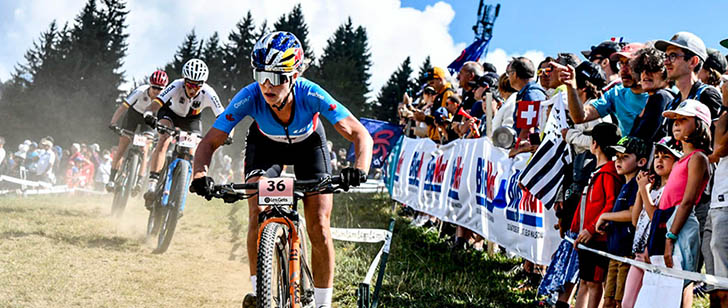June 25/09 20:01 pm - Women Cyclists are Different than Men
Posted by Editor on 06/25/09
This Resource is provided with the assistance of Specialized Designs for Women
There are many subtle differences between the anatomies of women and men which affect how they ride bikes. So what should you keep in mind when choosing a women's bike? Here are a few things to consider:
Shorter Reach
Women's arms are almost universally shorter than those of men of the same height. When a woman rides a standard bike, she must stretch relatively farther to reach the bars. This can cause fatigue in the shoulders and back, which can make the bike more difficult to control. Discomfort in the hands and saddle area can also be attributed to the additional pressure caused by a stretched position. Furthermore, getting down into the drops on a road bike is going to be almost out of the question for many riders, so control in tight corners and on twisty descents will be compromised. Consequently, the geometry of a women's bike should feature a shorter top tube and road handlebars with a shorter reach to the brake hoods.
Smaller Hands
Generally, women have smaller hands than equivalently sized men. This affects their riding experience in several ways if they are riding standard equipment.
The most obvious problem is reaching and using STI levers, which can cause considerable discomfort and hand fatigue on long descents that require constant braking. Some women even have to reposition their hands to get a good grip on the brake lever, which can be scary in sudden-stop situations. Shifting is also compromised if a woman's hands are not big enough to use the entire throw of the lever, especially while moving to an easier gear because the woman's smaller hands produce less leverage causing the effort required to make the shift to feel disproportionate. Women should look for adjustable reach brake levers. Another option is to use shims to adjust the reach.
Handlebar shapes and grips can also pose problems with comfort and control. Ergonomic features, such as wing-profile tops on road bars, which are designed around a larger hand, can make it difficult to get a solid grip on the bar. For mountain bikers, large-diameter grips can make reaching brake levers a challenge. Women's bikes should feature handlebars with smaller diameter grips. The Specialized Designs for Women road handlebars have size proportionate top-ergo sections, to make holding the bars more comfortable, plus a shallower reach and drop make it easier to cruise on the hoods and descend in the drops. On mountain bikes, look for smaller-diameter grips and adjustable-reach brake levers whenever possible. Appropriate diameter handlebars and grips keep hands happy over long distances and on extended descents. Wearing women's-specific gloves can also help with smaller hands.
Narrower Shoulders
Generally women's shoulders are slightly narrower than men's. Selecting a proper handlebar width is primarily a function of this dimension, because the optimal bar width will put the rider's hands underneath the shoulders for both men and women. If the bar is too wide the shoulders and upper back will fatigue quickly, leading to pain at the base of the neck. Consider switching to narrower handlebars on mountain bikes (smallest size 620mm) and on road bikes (smallest size 36cm).
Lower Average Weight
On average, a woman tends to be 20 percent lighter than a man of the same height. Though this is not true in every case, this means that traditional products are overbuilt for the needs of the majority of women. This results in bikes that can be excessively heavy, suspension that may be too harsh, and frames that may be stiffer than required. So even if a frame is small enough, it will probably ride much more harshly for a lighter rider and it will be difficult to get all of the travel from the suspension. Some women's bikes now feature tubesets with a smaller diameter, mountain bikes have custom-tuned suspension and carbon road bikes feature custom carbon lay-up for the rider's lower average weight.
Different Weight Distribution
Not only are women lighter than men on average, they also carry their weight in different places. Typically women have a lower center of gravity because they don't have as much upper-body muscle mass. This can make a significant difference in how front suspension performs, because a woman will have less weight on the front wheel. Bike geometry and suspension tuning need to be designed with these considerations in mind.
The bottom line is: women are different from men, and their bikes should be as well.
Related Photo Galleries
| Return to Cycling 4 Women homepage | Return to Canadian Cyclist homepage | Back to Top |


